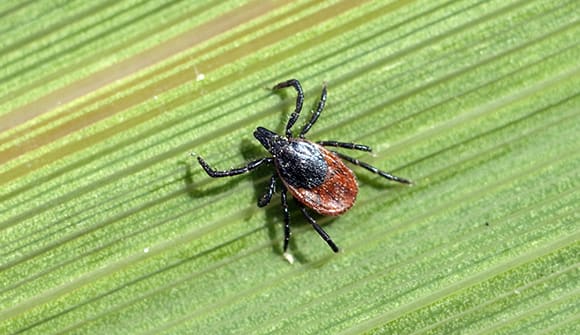Watch for ticks this summer
Cases of tick-borne illnesses, including Lyme disease, are on the rise across the United States.
Article Date:

Summer: a time to shed our winter layers and step out into the warm sunshine to enjoy rivers, lakes and beaches; hiking trails and camp sites; community parks and sports fields. It's also a time to watch out for the pesky critters that come on all the adventures with us.
“Wait, what? Bugs?” you ask. “Who wants to spend summer worried about bites and stings?”
Ticks are particularly active during summer
The hot, humid temperatures are great for backyard picnics and outdoor activities, but they're also the perfect conditions for black-legged ticks. These creatures, carriers of Lyme disease, are more prevalent in the summer than at any other time of the year.
According to the U.S. Centers for Disease Control and Prevention (CDC), from 2019 to 2022, state and local health departments reported an average of 46,115 cases of tickborne disease, with Lyme disease accounting for the majority of them every year.
Additionally, the CDC said that in 2023, over 89,000 cases of Lyme disease were reported by state health departments and the District of Columbia.
What to look out for if you get bitten
Brian Granger, DO, a Baptist Primary Care family physician, checks his patients for Lyme disease any time someone shows symptoms of fatigue, tingling or numbness of arms or legs.
One of the most obvious signs of Lyme disease is the circular rash, almost like a halo around the tick bite. However, that doesn’t have to be present for someone to be infected with the bacterium that causes Lyme.
Untreated Lyme disease can include a variety of complications, such as encephalitis (a brain infection), myocarditis (a heart infection) or endocarditis (a heart valve infection). People can also develop chronic fatigue syndrome, a disorder that causes extreme tiredness that doesn’t go away with rest, Dr. Granger said.
Can these consequences be long term? Unfortunately, yes.
But here’s the good news: The risk of acquiring a tick-borne infection is still pretty low. Ticks transmit bacteria only after they have attached and taken a meal from their new host. The deer tick that usually carries the Lyme bacterium typically feeds for up to 36 hours before transmission, placing the risk of Lyme disease around 2%. It’s important to note that while the deer tick is the most prominent, other ticks can carry Lyme, as well.
Tick bite prevention and treatment
To reduce your risk of a bite, Dr. Granger recommended wearing long pants and sleeves when venturing into the woods.
“Make sure your clothes are white or khaki so you can easily spot ticks and then frequently check for them on your clothing and skin,” he added. “If you're bitten by a tick, you should contact your doctor and get tested, even if you don’t have a rash.”
If you get diagnosed with Lyme disease, the standard of care recommended by the CDC is 10 to 21 days of doxycycline, an oral antibiotic. Dr. Granger said after those two to three weeks, he would want to see the patient again to make sure the Lyme disease is gone.
“There's still some debate about treatment and how long Lyme disease can last,” he said. “Just make sure to be aware of how you feel and communicate that with your doctor. If you’re going to Google Lyme disease, make sure you're checking a reputable source.”
Looking for a primary care physician?
Visit baptistjax.com/newdoctor or call 904.202.4YOU (4968) to find the right doctor for you. Virtual appointments are available.



